
Brides to Be Upstaged by Bridesmaids?
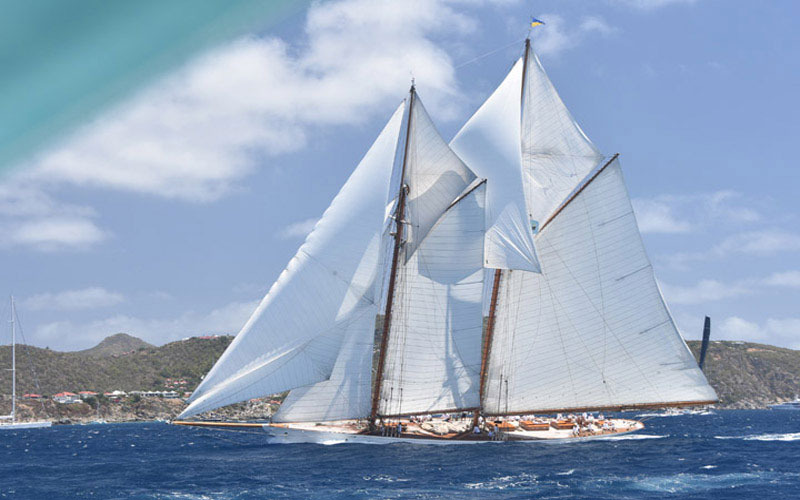
©Latitude 38 Media, LLC
By the time the 35th America’s Cup Finals, June 24 to June 27, are concluded, the Wanderer predicts that the Cup will have been diminished even more. Not because of ridiculous legal wrangling that besmirched everything leading up to the fantastic Cup Finals in San Francisco, but because the 15-meter foiling cats, the ‘brides’ as it were, are going to be overshadowed by the ‘bridesmaids’. Any wedding planner will tell you that’s not a good thing.
The Wanderer thinks Russell Coutts and company will come to rue the day they decided to invite the superyachts to their America’s Cup party for a Superyacht Regatta June 13-15, and the J Class boats to have a regatta June 16-20.
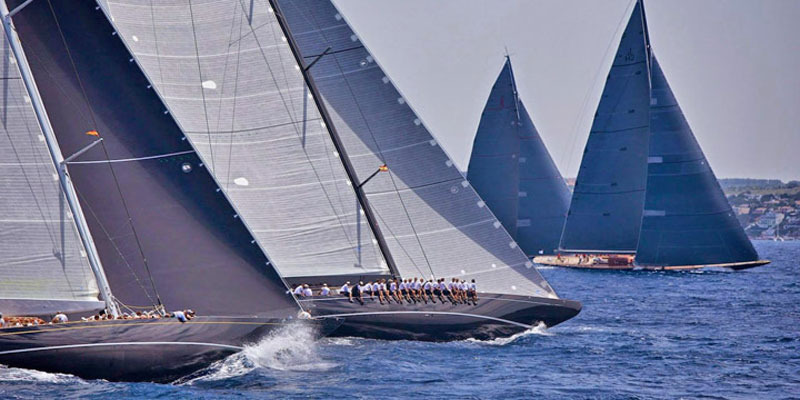
The superyacht event is between the end of the Louis Vuitton Cup Finals and the start of the America’s Cup Finals, while the J Class Regatta is in the three days between the 3rd and 4th races of the Cup Finals on June 18, and the 5th and 6th races on June 24.
There are just six teams that will be vying for the America’s Cup, five Challengers and the Defender from the Golden Gate YC, Oracle Team US. They’ll be sailing in just under 50-ft foiling catamarans capable of nearly 50 knots, an experience that almost no other sailors can relate to.
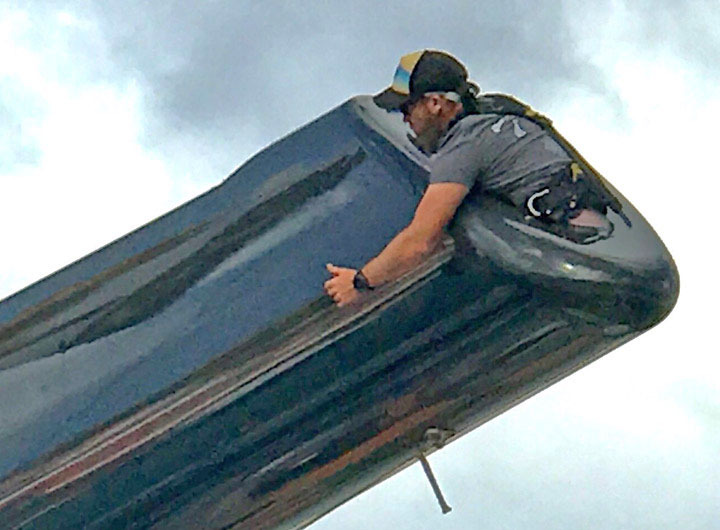
©Latitude 38 Media, LLC
The entry list isn’t yet complete for the Superyacht Regatta, but so far there are 19 boats that have indicated they’ll be racing. We suspect there may be many more, hopefully including the likes of the 218-ft Adix.
Among the current entries are the 196-ft Perini Navi Perseus, which carries the largest spinnaker in the world; the 182-ft schooner Adela, which dates back to 1903; the 170-ft Royal Huisman schooner Meteor; the 158-ft Frers sloop Hyperion; the 144-ft R/P sloop Visione; and the 138-ft Frers ketch Rebecca. In addition, at least six J Class yachts, about 135-ft, which will be later racing in their own regatta, are expected to compete.
The problem is that the ‘brides’ are, by comparison, tiny techno machines that only nerds and engineers will find it easy to love. They don’t have an iota of the style, soul or romance of the superyachts or the Js.
We’ve seen almost all the superyachts and J Class yachts race numerous times in the St. Barth Bucket, and often from vantage points less than 150 feet away. They are so spectacular they take your breath away. Even more impressive, they take your breath away when they’re just tied up to the dock, too. They don’t have the speed of the cats, but they’ve got the gravitas.
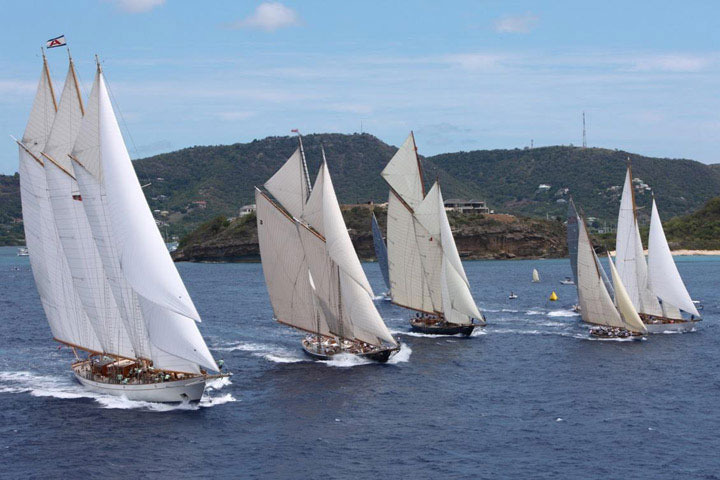
By the time the 35th America’s Cup is history, the Wanderer thinks that most people will have found the superyachts and J Class boats to be far more lovable and compelling.
What do you think? Is the Wanderer crazy?
By the way, if you’re interested in seeing some of the action in Bermuda late this month through almost the end of next month from the decks of a big California-based schooner, Marina del Rey’s Cameron Riddell has some openings on his 110-ft Eros. The great schooner was formerly owned and completely rebuilt by Bill and Grace Bodle of Richmond. She’s a beauty. Even if you don’t want to charter her, check out the video at www.sy-eros.com.
Marc Benioff Supports Ocean Cleanup
In the 2013 Transpac John Sangmeister’s Long Beach-based ORMA 73 trimaran Tritium Lending Club came up just 2.5 hours short of besting the record after at least six collisions with debris in the ocean. The threat of plastic pollution to basic human and planetary health is the primary reason to clean this up, and it’s often sailors transiting the out-of-sight Pacific Gyre who bring this ugly story home.
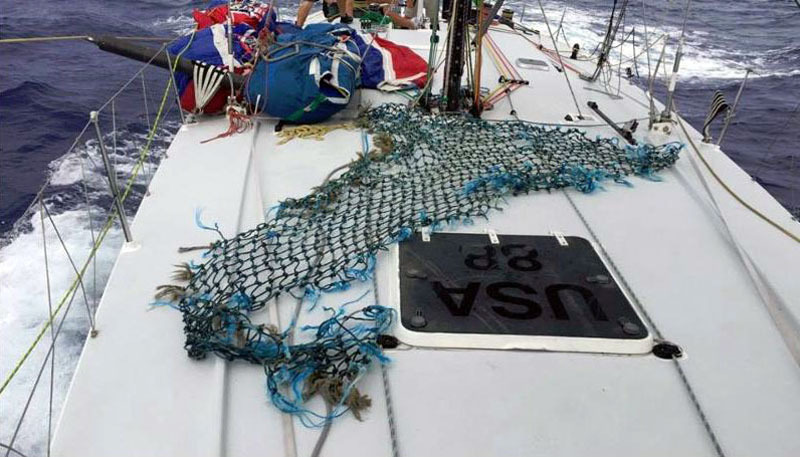
©Latitude 38 Media, LLC
Thankfully some positive news is on the way. The Ocean Cleanup project, founded by young, idealistic Dutch entrepreneur Boyan Slat, got a recent boost with a $22 million donation from the Bay Area entrepreneur Marc Benioff.
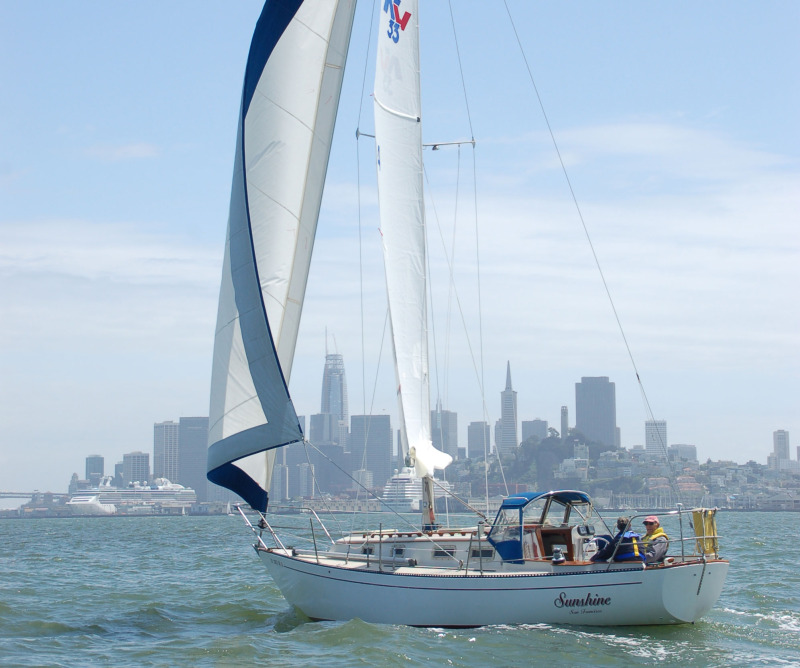
©2017Latitude 38 Media, LLC
We wrote about Slat’s idea in 2015 when 20 boats returning from the Transpac participated in ‘The Mega Expedition’. Each crew deployed trawls to capture and measure plastic pollution. With that information and growing funding from Benioff and others, the concept of cleaning up the Pacific Gyre is closer to reality.
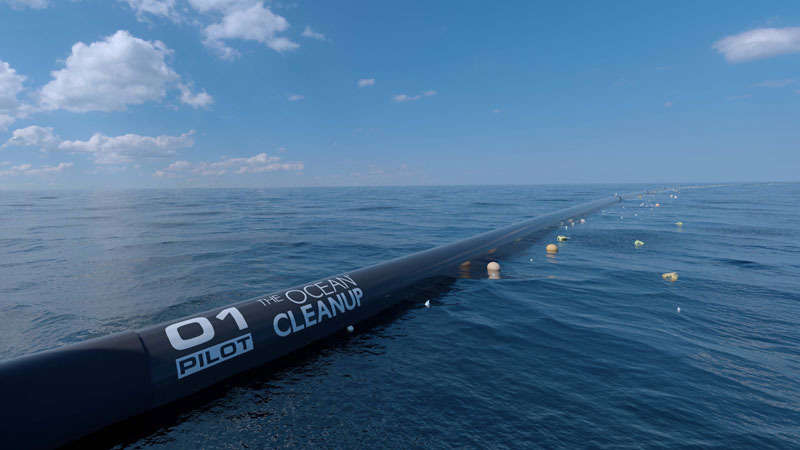
While it’s best to stop plastic from ever reaching the ocean, there’s no choice now but to clean up the plastic that’s already there. The Ocean Cleanup project has announced that development of the system is well underway and the initial deployment, and cleanup could start within 12 months.
Flipped Atlantic 57 Cat Recovered
Leopard, the Atlantic 57 catamaran that flipped 400 miles north of the Dominican Republic on the evening of November 15 while on a passage from Annapolis to St. Martin, was found on May 3 and has been recovered. The cat was spotted five months after she flipped by a fisherman 25 miles off Cape Lookout, North Carolina, and eventually brought to Beaufort by Sea Tow Crystal Coast.
Note that this is a Chris White design that was built in Bristol, RI, in 2008, and completely different in all respects from the Leopard-brand catamarans built in South Africa and ubiquitous in the Caribbean charter trade.
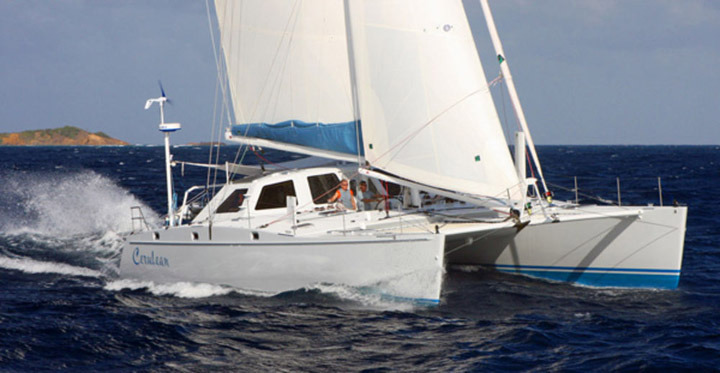
Leopard is the second Chris White-designed Atlantic 57 to have capsized. The 57 Anna capsized in the South Pacific in 2010. Both crew were rescued in good health from that incident.
The crew on Leopard consisted of Charles Nethersole, captain, and crewmembers Carolyn Bailey and Bert Jno Lewis. According to Nethersole and the crewmembers, Leopard was significantly under-canvased at the time that she flipped, with just a double-reefed main and partially reefed staysail. The conditions had been variable — at times they had to motorsail for lack of wind, and at times when it was gusting in the high 20s.
“There was almost no warning,” Nethersole wrote in a widely disseminated statement, “not even enough time for me to hit standby on the autopilot control right next to me. Just an almighty roar, then suddenly the boat was lifted up and went over. It seemed it was the sudden pressure drop more than the wind that did it, as there was no acceleration of the boat. It was bizarre, like nothing that ever happened to me before.”
The crew had two immersion suits and one survival suit to wear while waiting to be rescued. They spent 10 hours at night on the overturned hull before being saved by a Coast Guard C-130 search plane and M/V Aloe.
It has been speculated that Leopard may have been hit by a waterspout. The incident somewhat reminds us of the time about 12 years ago when the heavy 135-ft luxury ketch Sariyah, captained by our friend Timothy Laughridge, was suddenly knocked down in the same general area to the extent that the top of her mizzen was put into the water. It was something hard to imagine being possible.
For what it’s worth, the Atlantic 57 has a design displacement of 26,500 pounds, just 1,000 pounds less than a Gunboat 55. Both are high-performance cruising-cat designs. Given the statements of the crew, it seems that even a low-performance cruising cat might have flipped.
